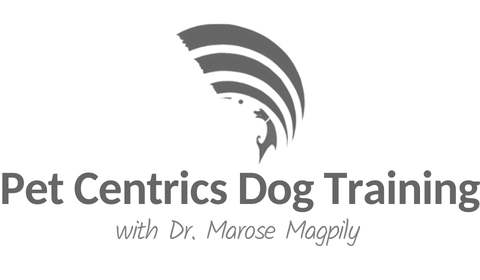IMPORTANT CONCEPTS:
- Marker – A marker allows you to inform your dog that he did something correctly at a precise moment in time. Commonly used markers are words or phrases like “Good!”, “Good boy/girl!” or “Good dog!”. “Yes” and a click from a clicker can also be used and are more precise markers than long phrases or two syllable words.
- A puppy or dog that is new to training will not automatically know what marker words mean. For the purpose of training new behaviors, we want our dog to understand 1) that hearing the marker means performed something correctly and 2) that the marker is always followed by a treat.
EXERCISE:
- Allow your dog to acclimate to your training location and make sure your dog is taking treats. If you are sure your dog is interested in the treats you’ve prepared, you can proceed with the exercise. If he is not taking treats, check the TROUBLESHOOTING section for advice on how to proceed.
- To begin, with your dog in front of you, say “Yes” then quickly place a treat on the floor where your dog can see it. Or you may also deliver the treat directly to your dog’s mouth.
- Repeat this several times in a session. You will know that the marker word is truly loaded if when you say “Yes”, the dog looks up expecting a treat.
VIDEO:
COMMON MISTAKES:
Improper timing
- Make sure that you are performing Steps 2 and 3 in a SEQUENCE, one AFTER another and not simultaneously. Your dog needs to understand that the marker word “Yes” predicts the coming of treats.
Using the dog’s name
- Do not call the dog by his name or expect attention from your dog during this exercise. This exercise is meant to teach the dog that the marker is followed by a treat. At this point, your dog is not expected to perform any behaviors.
Not offering high value treats
- Make sure you are using food that the dog finds motivating and high value enough. If your dog is not taking treats, you may need to work in a less distracting environment or, if possible, remove some distractions in the environment.
Trying to train in high distraction environments
- Make sure you start out by practicing in environments that are manageable for your dog – meaning places where there are zero to only minimum levels of distraction present. As mentioned previously, if your dog is not taking treats, you may need to work in a less distracting environment or, if possible, remove some distractions in the environment.
TROUBLESHOOTING:
What if my dog is not taking treats?
If your dog does not seem to show interest in the treats you are giving him, it may be due to one of the following reasons:
- Your treats are not high value enough. If so, adjust by experimenting with different kinds of treats, and use treats appropriate to the situation. Your dog may work for ordinary dog kibble at home where there are fewer distractions, but if you are working outside or around lots of distractions you must use higher value treats – yummier treats – that can “compete” with these distractions. CLICK HERE FOR SOME TREAT OPTIONS.
- Your dog is under stress and/or is distracted. Stressed, fearful or distracted dogs will often not take food. If your dog is under stress or is overly distracted, try either removing the distractions from your training location OR distance/remove yourself and your dog from the distractions.
- Your dog is full. Some dogs never get full, but some dogs will only take food if they are truly hungry. Make sure you don’t overfeed your dog. When training, work during those times when you know your dog is hungry and motivated to work for food.
What if my dog is too excited and is jumping around?
If your dog is jumping around excitedly, simply remain calm and do not respond to his excitable behavior. This is called disengagement. Most dogs will eventually calm down when they see that they cannot provoke a response out of you. Start the exercise only when your dog is calm and can keeping four paws on the floor.
What if my dog is getting distracted and is not paying attention to me?
As mentioned, stressed, fearful or distracted dogs will often not take food. If your dog is under stress or is overly distracted try either removing the distractions from your training location OR distance/remove yourself and your dog from the distractions. You should also consider switching to higher value treats. Some dogs may also need to go through a period of acclimation first, before being ready and responsive to training.
Do you have other questions or problems with this exercise? Email Doc Marose for some advice.
LEVEL UP:
You may proceed to the Attention Exercise after you’ve done around 30 reps of the Marker Loading Exercise, and especially when you see your dog beginning to perk up and get excited at hearing the “Yes” mark.
